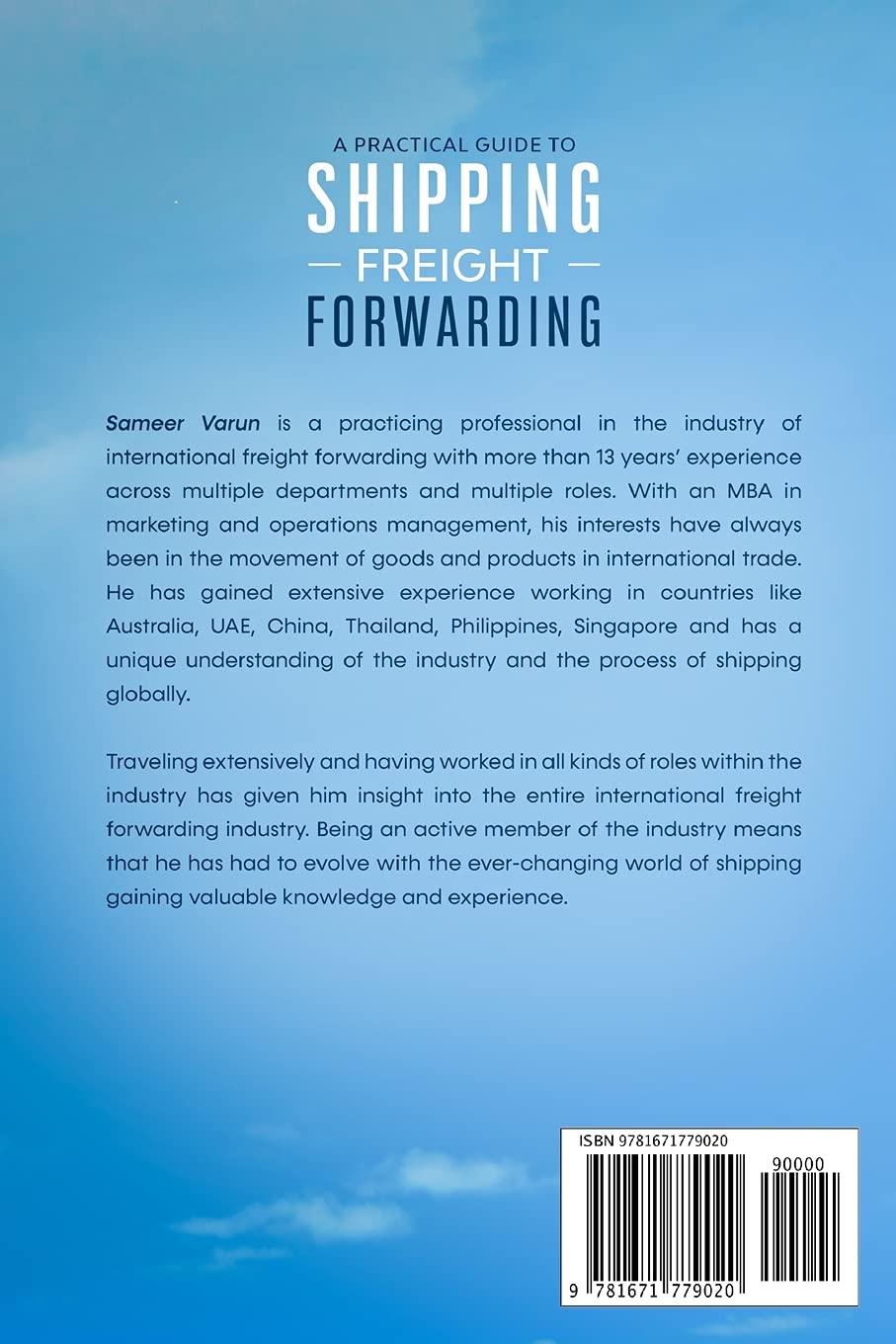Customer Services
Copyright © 2025 Desertcart Holdings Limited
Desert Online General Trading LLC
Dubai, United Arab Emirates



Full description not available
M**Y
Informative, but desperately needs an editor
This is quite an informative and practical guide to the ins and outs of freight forwarding, though it focuses primarily on ocean freight—it barely touches on trucking, only mentions rail a few times, and does not address the details of air freight at all.There is a lot of useful information and advice for best practices for people who work for a freight forwarder, whether they are new to the industry or manage a freight forwarding business. The author is clearly very knowledgeable about this subject.Based on the content alone, I would give it five stars..However, while the book is direct and easy to understand for the most part, it really should have been reviewed by an editor. It is clear from the style of writing and word choice that it was written by someone whose first language was not English. There are also a LOT of spelling errors (such as the times he talks about warehouse "raking" when it should be "racking," a "river" instead of "driver," etc.) and grammatical mistakes that are mostly the use of incorrect punctuation, frequently resulting in sentence fragments that make what he's trying to say harder to understand. This does make some sections more difficult to read than they should be, and overall it can be quite confusing to someone who is completely new to the logistics industry and isn't already familiar with what the terminology should be.The author also has a habit of introducing new terms or acronyms without explaining what they mean, or explaining them in later chapters but not when they first appear. There is a glossary in the back, but that should only be a helpful reference, not something you need to check to make things make sense. I took to writing definitions and corrections in the margins when I felt something needed clarification.Another problem, though not as big a deal as the other things, is the format. Again, not a huge deal, but it was a distraction when a new section would be introduced with a bullet point, but other bullet points were used for lists, even on the same page, so it didn't have an easy-to-read layout. Some pages cut off, leaving a lot of empty space, then awkwardly continue on the next page. This was clearly a self-published book, but all things considered, this was just distracting and not some giant problem compared to misspellings or undefined new terms.I work in the shipping industry and have worked for a freight forwarder before (though not an ocean freight forwarder), so I'm very familiar with some of the things discussed in this book, and I have also learned some things that were outside my personal experience, which is why I say the content in this book is great. (I have also been an editor, which is probably why I'm so nitpicky about the style of writing and format)But while roughly the first half of the book is very understandable, as the topics got more complex, the author's writing made it more difficult to understand what he was trying to explain. There were several times I went ahead and just googled a term or a concept and wrote it out more clearly for myself on a post-it so I wouldn't have to try to decipher the idea if I returned to that part of the book. The section on the Bill of Lading (BOL), which is particularly important in shipping, was especially confusing in the way it was explained. I thought I had a good understanding of how that works, but the author's explanations had me so confused that I wound up looking it up and writing out enough post-its that I completely covered most of that section in an effort to make it more understandable. (I will also point out that a BOL works a bit differently for trucking than it does for ocean freight, which is what caused my confusion, and this difference was not addressed at all.)All in all, I do recommend this book as an educational and practical guide to freight forwarding. I cannot stress enough that it is extremely informative and can be an incredibly useful resource to anyone at any point in their logistics career or considering going into logistics. It would be a truly exceptional book if the author had it reviewed by an editor, or even just another logistics professional, and then published a second edition.
S**N
Helpful for the beginner but felt overly simplistic.
I bought this book as I am recently trying to find out more about freight forwarding. I thought overall it was helpful to learn an overview of the field, but the book had tons of errors in it and some sentences that would just plain stop in the middle. Mr Varun needs an editor, badly. 2.5 out of 5.
F**Z
NVOCC
There is a BIG mistake on page #103. This author defines NVOCC as Non-Vessel Operating Container Carrier, but the correct definition is Non-Vessel Operating Common Carrier.
Trustpilot
1 month ago
1 month ago